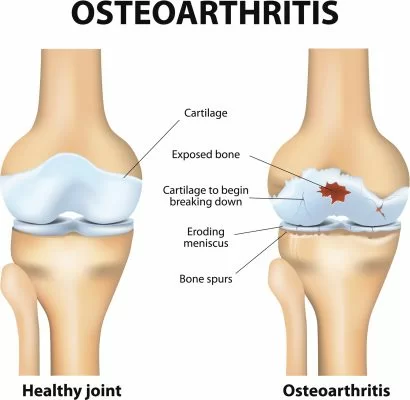Two factors might be to blame; inactivity and chronic inflammation. The traumatic decrease in society’s activity level has led to a supply and demand deficient for cartilage and muscles. If there isn’t enough demand put upon cartilage and muscles, then they atrophy or waste away. DR. CHAD LARSON
In episode 47 of his Keep It Real video series, Dr. Larson discusses osteoarthritis and how to reverse it.
Many patients are seen in Dr. Larson’s practice due to musculo-skeletal issues, which are painful problems concerning the bones, muscles, and joints. There are two different types of arthritis:
- Osteoarthritis
- Rheumatoid Arthritis
Over the past couple of decades, there has been a swift increase in the incidence of osteoarthritis. There was a study released in the PNAS, or Proceedings for the National Academy of Sciences, which studied three different subject groups. They studied the knee bones and cartilage of prehistoric hunters and gatherers, bones from the pre-industrial area, which are those of the late 1800s to 1940, and the post-industrial era, which was 1970 to 2015. What they found was that the incidence of osteoarthritis from the pre to post-industrial age doubled!
What Caused This Increase In Osteoarthritis?
One hypothesis they examined was that people are living longer, which would naturally predispose the older generation to arthritis, but a second hypothesis was that obesity was a major factor, as people have become more obese, it has put more wear and tear on muscles and led to an increase in osteoarthritis.
But, what they found is, as they teased out the factors of age and obesity, it didn’t completely explain the rapid rise in osteoarthritis findings. They then hypothesized that two additional factors might be to blame; inactivity and chronic inflammation. The traumatic decrease in society’s activity level has led to a supply and demand deficient for cartilage and muscles. If there isn’t enough demand put upon cartilage and muscles, then they atrophy or waste away.

If you don’t put enough demand on cartilage, it gets weaker and thinner, and that can damage its structural integrity. Inactivity has also led to muscle atrophy and a decrease in muscle strength. The more demand you put on muscles and cartilage around the joints, the more strength they have to support joints and decrease osteoarthritis.
The other factor they examined was general systematic inflammation. Following the post-industrial age, humans have been exposed to much more chemicals and environmental factors that lead to chronic inflammation in the body. The average person also has a higher concentration of visceral adipose tissue or “belly fat”. Belly fat isn’t just about cosmetics, scientists are just beginning to understand how it might be a separate inflammatory organ system that produces inflammatory chemicals in the body. The theory is that the increase in belly fat is to blame for chronic inflammation in the body.
If you already have a little wear and tear in your cartilage or muscles from a previous injury, chronic inflammation works by both magnifying and expediting the degeneration of the joint leading to osteoarthritis. If your muscles are weak and you have an increased amount of belly fat, it will hurt the integrity of your joints and help to expedite the incidence of arthritis. Osteoarthritis is a perpetuating condition, because of inactivity a person develops it, then they get less active because it hurts to move, which creates a downward cycle.
The Good News Is That Osteoarthritis Is Reversible: Here’s How!
- If you put more demand on your muscles and cartilage, you can strengthen them, and increase their structural integrity
- One of the best ways to deal with osteoarthritis is through prevention
- You can prevent osteoarthritis by being more active, standing more at work, walking regularly, and taking breaks from the computer to get some exercise
- If you spend more time on your feet, it will help to strengthen both cartilage and the muscles of your body, which will reduce your risks for osteoarthritis
- Also, decreasing the amount of fat in your abdomen, or belly fat, will help to curb chronic inflammation, which will help to decrease your risk factors for osteoarthritis
Related Article




